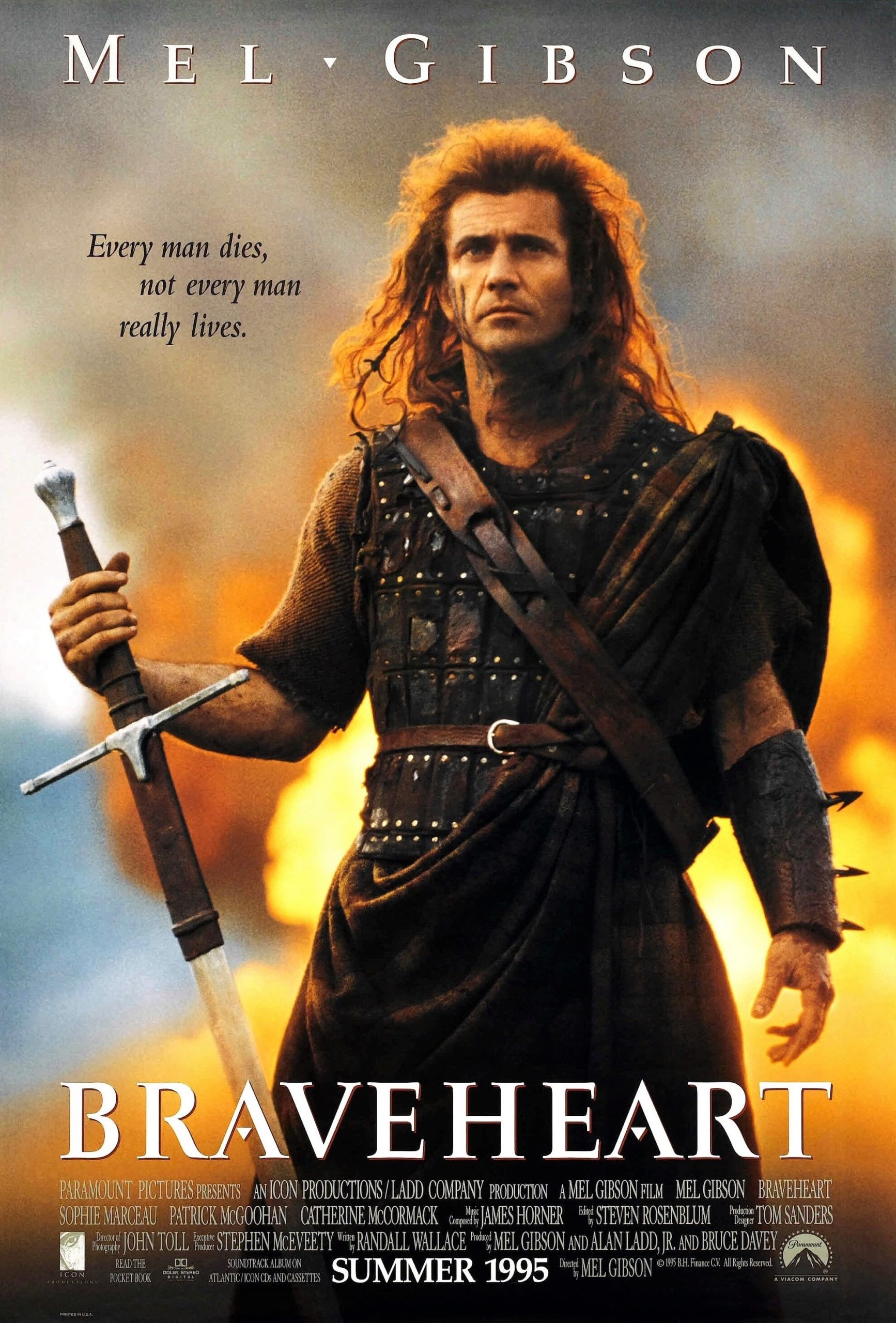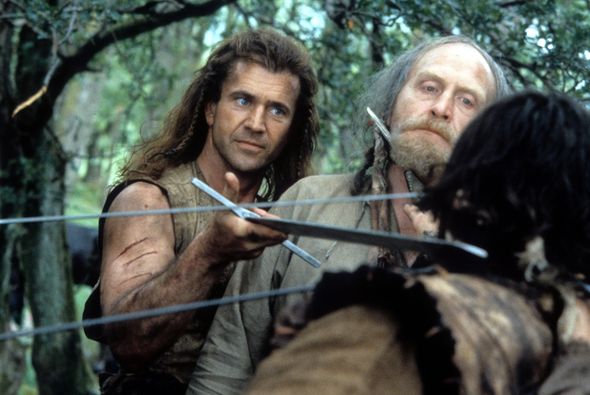Braveheart (1995)

“Braveheart” (1995): A Cinematic Masterpiece of Epic Proportions
Mel Gibson’s “Braveheart,” released in 1995, is a sweeping historical epic that has left an indelible mark on the landscape of cinematic storytelling. Chronicling the life and struggles of the 13th-century Scottish warrior and patriot, William Wallace, this film is a masterclass in grand-scale filmmaking, blending breathtaking visual splendor, powerful performances, and a stirring narrative that resonates with audiences across generations.

At the heart of “Braveheart” lies the story of William Wallace, played with raw, emotional intensity by Gibson himself. The film follows Wallace’s transformation from a humble farmer to a fearless leader of the Scottish resistance against the oppressive rule of the English monarch, King Edward I (portrayed with masterful villainy by Patrick McGoohan). Through a series of pivotal events, including the brutal murder of Wallace’s wife, the audience is drawn into his personal journey of vengeance and the subsequent ignition of the Scottish War of Independence.

Directed with an unwavering vision and a keen eye for historical authenticity, “Braveheart” immerses the viewer in the gritty, blood-soaked world of medieval Scotland. Gibson’s masterful command of the cinematic medium is evident in the film’s sweeping, large-scale battle sequences, which are choreographed with a visceral, visceral intensity that transports the audience to the heart of the action.

The film’s technical achievements are equally impressive, with the stunning cinematography, production design, and score all contributing to the creation of a truly immersive and visually stunning experience. The lush, verdant landscapes of Scotland become a character in their own right, serving as a backdrop for the film’s epic, larger-than-life moments.

Beyond its technical prowess, “Braveheart” also succeeds in its exploration of themes that resonate with audiences on a deeper, more universal level. The film’s examination of themes such as freedom, sacrifice, and the enduring human spirit strike a chord, elevating the narrative beyond a mere historical drama and transforming it into a timeless tale of heroism and the pursuit of liberty.

Mel Gibson’s performance as William Wallace is a tour de force, capturing the character’s emotional complexity and unwavering determination with a rawness and intensity that is truly captivating. The supporting cast, including Sophie Marceau as the enigmatic Princess Isabelle and Brendan Gleeson as the steadfast ally, Hamish, provide stellar performances that complement and enhance the film’s overall impact.
The film’s legacy is further cemented by its recognition as an Academy Award-winning masterpiece, earning accolades for Best Picture, Best Director, and Best Cinematography, among others. “Braveheart” has since become a cultural touchstone, its iconic images and memorable moments etched into the collective consciousness of cinema enthusiasts worldwide.
In conclusion, “Braveheart” is a cinematic triumph that stands as a testament to the power of storytelling and the enduring appeal of epic historical dramas. Mel Gibson’s masterful direction, the film’s technical brilliance, and the captivating performances of its cast have all contributed to its enduring legacy as a true classic of the genre. “Braveheart” is a film that not only entertains but also inspires, leaving a lasting impact on all who experience its grand, sweeping vision of the human spirit in the face of adversity.











